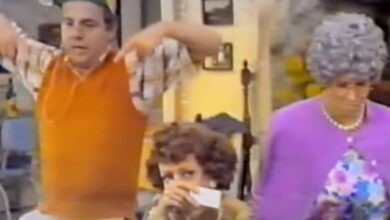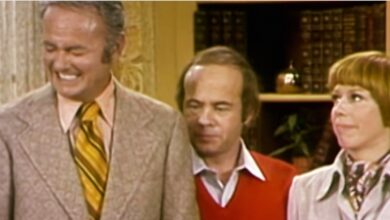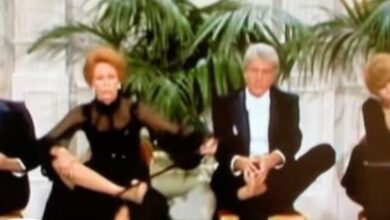Resonating Through Time: The Enduring Impact of Buffalo Springfield’s ‘For What It’s Worth’
In the landscape of 1960s counterculture, few tracks carry the symbolic weight of Buffalo Springfield’s “For What It’s Worth.” Debuting in December 1966, the song didn’t just find its place in record collections—it became a cultural barometer, capturing a unique period of unrest. Often linked with anti-war movements, its roots lie in a much more localized conflict that happened right in the heart of Los Angeles.
The origin story of the song centers on the Sunset Strip, where rising youth presence around music clubs was seen as a threat to public order. When authorities imposed a curfew to discourage young crowds from gathering past 10 p.m., it sparked outrage among the youth. The situation reached a head on November 12, 1966, when nearly 1,000 demonstrators—including cultural icons like Peter Fonda and Jack Nicholson—rallied near Pandora’s Box. Although intended as a peaceful sit-in, the night turned chaotic, exposing the growing generational rift in America.
Stephen Stills, who would later be revered for his work with CSN&Y, was present to witness the scene. Deeply impacted, he quickly translated his observations into music, giving birth to “For What It’s Worth.” What resulted wasn’t just a protest song—it was a poetic document of unease, embodying the emotional uncertainty many young people felt in a rapidly changing world. The song’s understated arrangement and haunting chorus allowed listeners to project their own struggles onto it.
Interestingly, when Buffalo Springfield released their self-titled debut album in 1966, this now-iconic track was nowhere to be found. It wasn’t until the massive popularity of the single that the band and their label decided to reissue the album in 1967, swapping out a lesser-known song to make room. Their instincts were correct: “For What It’s Worth” soared to number seven on the Billboard Hot 100, proving its resonance across a divided nation.
Buffalo Springfield, formed earlier that same year, brought together talents like Stephen Stills, Neil Young, Richie Furay, Bruce Palmer, and Dewey Martin. With their fusion of folk-rock and psychedelic elements, they emerged as one of the era’s most innovative groups. Their close affiliation with famed venues like Whisky a Go Go added to their influence within the L.A. music scene and helped them build a loyal following even as internal tensions loomed.
Their name came from an unexpected source. While staying at a friend’s house, Stills and Furay spotted a steamroller parked outside bearing the logo “Buffalo Springfield Roller Company.” The visual stuck with them, and it became the band’s official name—an industrial label later linked forever with a cultural awakening.
Despite their early success, the group’s internal dynamics quickly deteriorated. Legal complications and deportation issues plagued bassist Bruce Palmer, who was frequently replaced. These lineup disruptions caused friction and instability. As differing visions among members widened the gap, Buffalo Springfield ultimately disbanded in 1968—just two years after forming—leaving behind a small yet influential catalog.
Though short-lived, the band’s impact was long-lasting. Stephen Stills went on to achieve fame with Crosby, Stills & Nash (and later Young), while Neil Young launched a prolific solo career that spanned decades. Buffalo Springfield’s sound and spirit served as a bridge between traditional folk storytelling and the political edge of late ’60s rock, paving the way for future artists.
Over time, “For What It’s Worth” became more than a song—it evolved into a cinematic shorthand for resistance. It found its way into dozens of films, television series, and documentaries, often used to underscore themes of protest, reflection, and change. Whether heard in a war documentary or a coming-of-age drama, its iconic opening line—“Stop, hey, what’s that sound?”—instantly sets a reflective tone.
Its legacy was formally recognized in 2004, when Rolling Stone placed it at number 63 in their list of the 500 Greatest Songs of All Time. The tune’s simplicity is deceptive; within its gentle pace and sparse instrumentation lies a potent emotional call for awareness. It distilled the confusion and yearning of a generation into one unforgettable refrain, which still holds power today.
The circumstances surrounding its creation illustrate how quickly art can rise from social tension. A local protest over a curfew spiraled into a nationwide call for awareness, fueled by one man’s songwriting and a band willing to amplify his message. In this way, “For What It’s Worth” stands as proof of how music, born from immediate experience, can echo across decades.
Stephen Stills revealed that the song’s title was an offhand remark that stuck. When introducing the track to Atlantic Records co-founder Ahmet Ertegun, he reportedly said, “Here’s a song, for what it’s worth.” That casual phrase became its official title, forever linked to a composition that defined a cultural moment by accident as much as intention.
Through the years, the song has been reimagined by artists from various backgrounds. The Staple Singers lent it a gospel soul, while Cher brought her own stylized interpretation. These covers only reinforce the song’s chameleon-like quality—it fits every era and genre, morphing into whatever a new generation needs it to be.
Decades on, “For What It’s Worth” remains a staple in conversations about protest music. It continues to echo in demonstrations, playlists, and retrospectives, a constant companion in times of unrest. Its endurance proves not only the strength of its composition but the timeless nature of its message: remain alert, stay aware, and listen to what’s happening around you.





